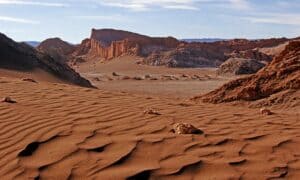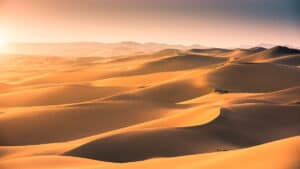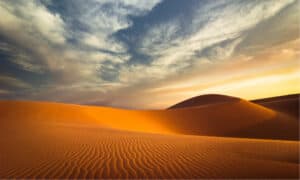America’s West is known for its breathtaking natural beauty, from its rolling hills and mountain peaks to its rocky coastline and desert superblooms. Any of the region’s well-known national parks are among the best must-see spots. This includes the Grand Canyon in Arizona, Glacier National Park in Montana, Yellowstone National Park in Wyoming, and Death Valley in California — along with 25 others spread across the western United States!
Along with that, this region also offers ample activities for locals and tourists to enjoy. Some examples include shopping along Rodeo Drive, sightseeing, or partaking in any of the plentiful outdoor adventures offered throughout each western state. One of the most popular ways to get out into nature is through hiking, kayaking, or whitewater rafting! Though more rare, desert superblooms also bring people from all over the world to the west — specifically in California, Arizona, and Nevada. But what are desert superblooms? And why do we need to protect them? Read on to discover everything there is to know about them, how visitors are destroying the desert superblooms, and how they can be protected.
What are Desert Superblooms?

Canterbury Bells wildflowers (Phacelia campanularia) in Joshua Tree National Park during California’s superbloom.
©Melissa Kopka/iStock / Getty Images Plus via Getty Images
First, let us explore what desert superblooms are. To start, they are a rare natural phenomenon during which numerous native wildflower species bloom all at once. This creates a stunning display of brightly colored flowers, covering the desert in rows upon rows of beauty. But what makes it super? Well, this occurrence coined the name “super” bloom because of the many different flowers that bloom at exactly the same time, rather than just one at a time — which is what normally happens. While there are over 200 wildflower species that can bloom during this time, some of the most common plants include desert lupines, Mexican gold poppies, desert lilies, cacti, and ocotillos.
Furthermore, this desert phenomenon can be spotted in two main places in the United States. These places include California and Arizona, though Nevada has also had a handful of superblooms in its history, too. They are most common in Death Valley, Sedona, Joshua Tree, and the Antelope Valley Poppy Reserve in California. Alternatively, some argue that Picacho Peak is one of the best spots to see blooming wildflowers and cacti during the state’s rare superblooms.
When do Desert Superblooms Occur?
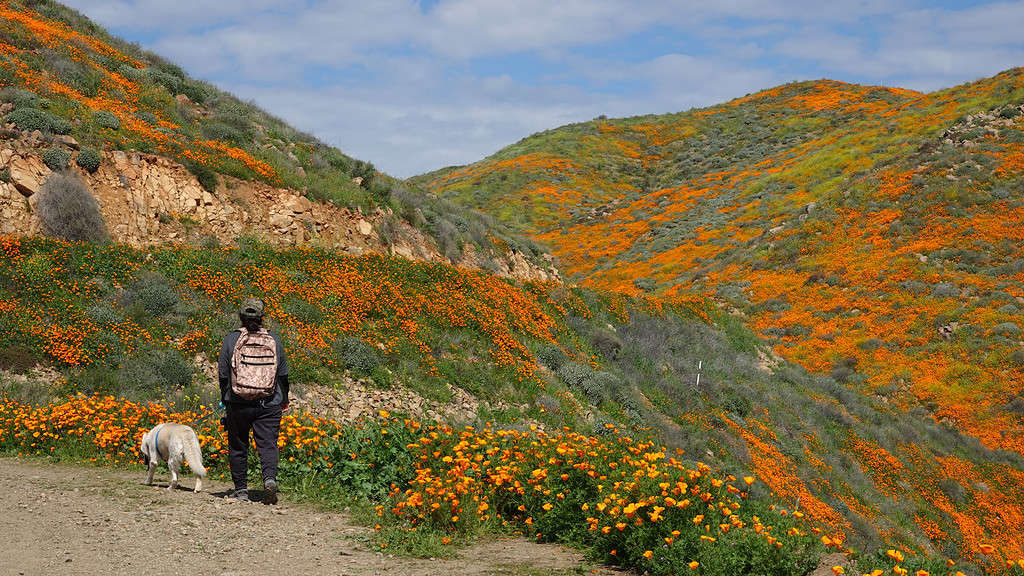
You’ll find that the best time to view golden poppies is mid-morning, just before the winds blow away the blooms.
©Simone Hogan/Shutterstock.com
Desert superblooms are mainly associated with unusually wet conditions, like a wet winter or a really wet rainy season. Other aspects affecting their success or failure include soil type, temperature, and vegetation cover. According to experts, the best time to witness this anomaly is around the start of the spring season, which usually begins in mid-February. The chances of witnessing desert superblooms are even possible as late into the year as June. Having said that, it is important to note that desert superblooms do not occur annually, but rather happen once every 10 to 15 years. On this rare occasion, the peak often only lasts for about two weeks in any given location. Nevertheless, there is still no foolproof way of predicting exactly when superblooms will occur. This is mainly because they are caused by generally unpredictable environmental factors, though many still try!
The last superbloom in the United States was in March 2019. This breathtaking sight was visible throughout California in Anza-Borrego Park, Carrizo Plain National Monument, and Death Valley National Park. It was so expansive, the bloom could be seen from space! Because of the persistent state-wide droughts, these floral explosions are even more rare than they were prior to the 21st century. Besides 2019, these botanical events also took place in 2017, 2016, 2005, and 1998.
How Visitors are Destroying the Desert During Superblooms
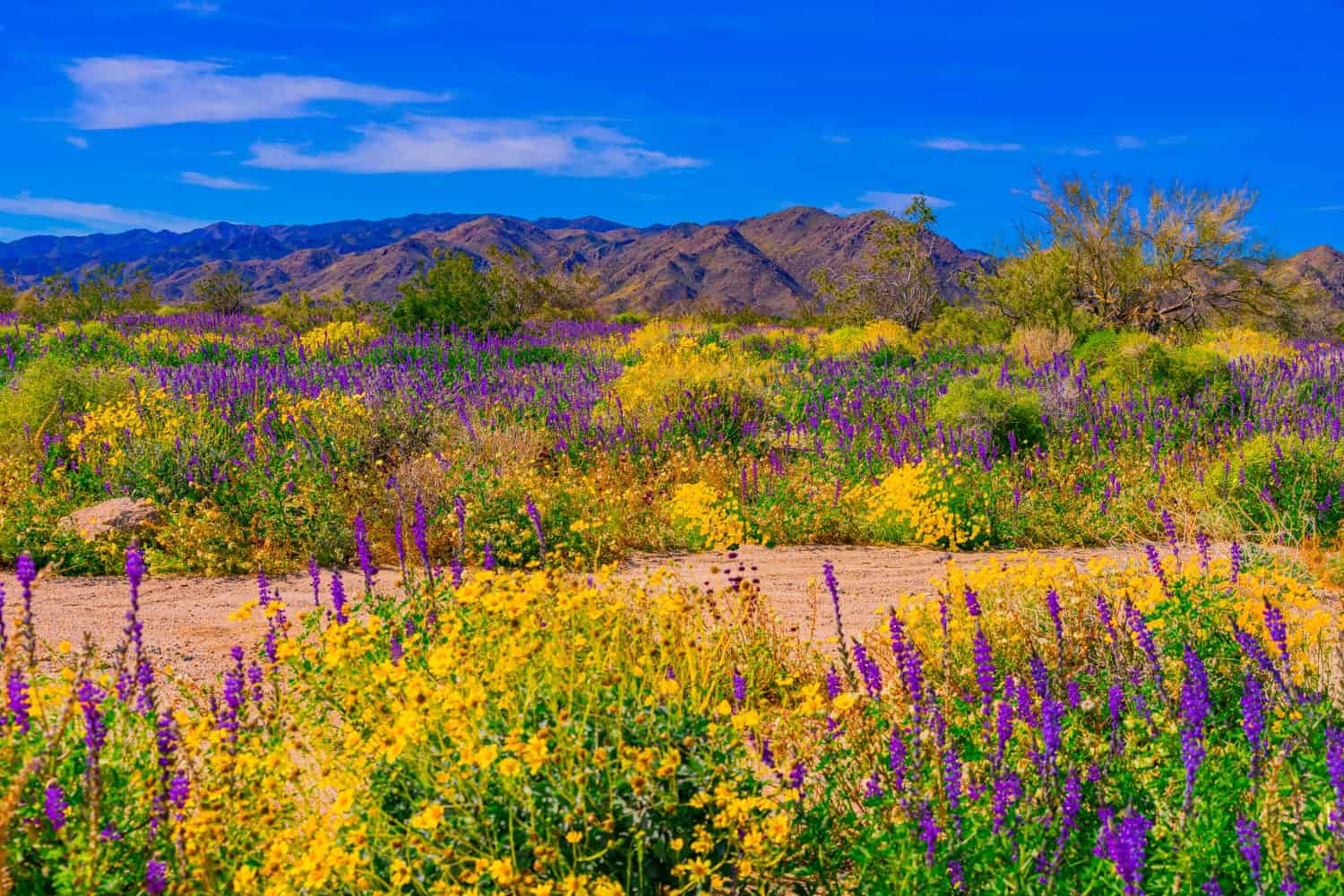
Native flowers bloom during a rare desert superbloom.
©Patricia Elaine Thomas/Shutterstock.com
Desert superblooms have a special ability to inspire and reconnect people with the Earth, as well as the many native plants and animals that reside in it. Plus, its natural beauty and picturesque visuals also help attract thousands of people to them. The last superbloom in California, for example, drew over 200,000 visitors to the various parks where these flowers were visible!
Though many people appreciate the beauty of these rare events, many visitors also unintentionally contribute to harmful environmental degradation in these areas. Here are the 10 main ways visitors are destroying the desert and how they can prevent the same damage during future superblooms.
Overcrowding

Due to overcrowding, many national parks have implemented a lottery system to gain access to their grounds, like Zion National Park. This is to help prevent overcrowding during peak seasons.
©adriaticfoto/Shutterstock.com
Overcrowding is another problem many of the nation’s deserts face. This is mainly because large numbers of visitors in a concentrated area put excessive, unnatural pressure on the local environment. For example, attendance at Joshua Tree National Park has boomed in the past decade, doubling from roughly 1.5 million visitors in 2015 to over 4 million in 2022! While it is good that people are exploring our natural landscapes more today than ever before, it has definitely had negative impacts. We will discuss more specific examples of this damage later. But to reduce overcrowding, consider visiting during the weekdays or during less crowded times. Moreover, exploring lesser-known superbloom locations can be advantageous for the environment and provide an even more unique viewing experience!
Trampling Native Plants

Nature enthusiasts and photographers alike flock to desert superblooms to catch a glimpse of their otherworldly beauty.
©Sanjana Rahman/Shutterstock.com
Desert terrain is particularly vulnerable to people walking on it. As a result, the native flora is highly susceptible to damage when large crowds depart from the designated hiking trails and marked paths, especially during superblooms. Even just stepping one foot off the trail can damage — or even kill — the delicate desert vegetation. This is especially true during times of overcrowding. If you think about it like this, just one person stepping on a plant once might probably not kill it, but thousands of people stepping on the same plant over and over definitely will. To prevent this, make sure to stay on the specified trail at all times and respect any closed-off areas, even if they look tempting!
Soil Erosion
Another one of the biggest impacts overcrowding has on deserts is soil erosion. This is a harmful problem experienced throughout many desert landscapes. While it is common, it can damage the soil’s ability to support native plants, as well as cause trail instability or collapse. Excessive foot traffic during desert superblooms also disrupts the delicate balance of desert ecosystems.
Have you ever hiked in the desert and noticed a strange, dark crust covering the surface of the ground? If you have, you likely saw something called “cryptobiotic soil crust.” Composed of cyanobacteria, lichen, moss, and fungi, this living soil layer plays a vital role in preventing soil erosion. Along with that, it helps stabilize the soil, which provides healthy grounds for new plant growth. Visitors are destroying the desert by damaging the early stages of this cryptobiotic soil. Unfortunately, the heavy foot traffic caused by large crowds during desert superblooms causes the crust to break apart and lose its structure. As a result, the underlying soil becomes more susceptible to the negative affects of wind and water. This ultimately leads to soil erosion, which causes the desert ecosystem to suffer.
To prevent this, simply stick to the marked trails and do not stray from hiking paths. This minimizes unnecessary soil disturbances, which in turn reduces erosion. By allowing cryptobiotic soil crust to thrive, people can help preserve fragile desert ecosystems and prevent further damage!
Littering
One of the most prevalent ways visitors are destroying the desert is by littering. For example, according to 36 C.F.R. §2.14(a)(1), littering anywhere on a National Park Service (NPS) site is prohibited. This includes disposing of trash in any location other than a trash can. The penalties for littering range in severity depending on the specific location, but can include a $500 fee, up to six months in jail, or sometimes even both!
Even though the penalties for littering are quite high, it is still a widespread problem throughout America’s many nature parks. This is a massive concern because improper disposal of trash harms the environment and can negatively impact wildlife. To reduce your impact on desert environments, dispose of trash in designated bins or take it with you. Following a leave-no-trace or “pack in, pack out” policy is best. The overall message of these two philosophies aims to leave all trails or campgrounds as clean (or cleaner) than when you arrived.
Wildflower Picking and Removing Plants
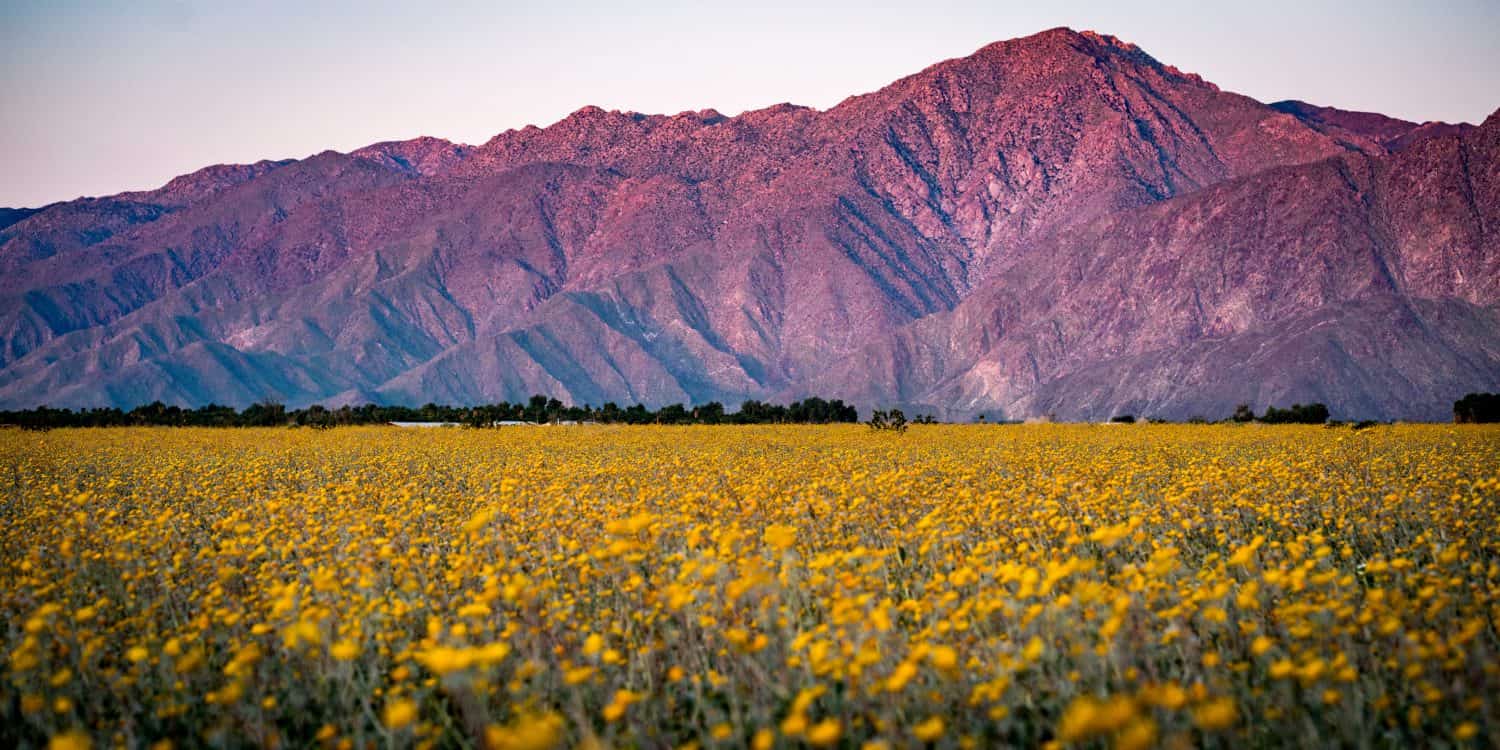
Wildflower desert superbloom in Anza Borrego State Park, California.
©Garett Wood/Shutterstock.com
Since there are so many flowers blooming during these events, it must be okay to pick some of the wildflowers, right? Well, the answer to that question is no. Even though there are many flowers in bloom at this time, it is advised not to pick up or take any of the native plants in the area. While it may be tempting, especially during desert superblooms, it can disrupt pollination and seed dispersal. Additionally, it hinders the plants’ ability to reproduce. Plus, it probably is not even worth it anyway, since almost all wildflowers are fragile and wilt or perish soon after being picked.
Besides that, picking wildflowers has somewhat of a domino effect on the surrounding flora and fauna, expanding much further beyond just that one specific flower. To explain, wildflowers support entire ecosystems for pollinators, birds, and other native wildlife — even if it is on a micro-scale. Butterflies, other insects, and even some small birds rely on wildflower seeds, nectar, and pollen as their main food source. Moreover, some pollinators are not very mobile, can only travel short distances, or depend on just one species of plant for their survival. Without these plants, they will die. Because of that, it is crucial not to pick wildflowers when visiting desert superblooms. Take pictures and videos, or simply admire them in their natural environment, to help prevent habitat destruction in the desert.
Introducing Invasive Species
Another way visitors are destroying the desert is by introducing harmful invasive species to the area. People can introduce these dangerous non-native plants by simply walking around on trails with dirty shoes that have recently been used to hike in other areas. Since it is not something that many people think about when heading to new places, avid hikers and nature enthusiasts are some of the worst offenders — though their damage is likely caused inadvertently. Nevertheless, the transfer of microorganisms, stray vegetation, and other hitchhikers can cause invasive species to be introduced to the area. Humans can also introduce invasive species via other articles of clothing, their pets’ paws or fur, used gear, or even their vehicles. To ensure you are not damaging these natural landscapes, be mindful of the potential for spreading invasive species and avoid introducing new plants or plant seeds into the ecosystem.
Off-Roading

Limited-use road signs are used to indicate a road that has limitations on what specific vehicles can be driven on it. Alternatively, they explain how certain vehicles must be operated on that specific road.
©Eric Poulin/Shutterstock.com
Off-roading is a dangerous and extremely harmful way visitors are destroying the desert. There are multiple reasons for this, including habitat destruction, soil compaction, and damage to fragile desert ecosystems. Plus, the soil’s natural protective elements are highly vulnerable to vehicle use. Frequent vehicle use in restricted areas destroys the soil’s well-developed crust, which in turn destabilizes the ground. Off-roading can also cause ruts or compressed soil. This affects water retention as well as runoff, which leads to erosion in the area. Along with crushing plants’ stems, foliage, and roots, offroading also uproots plants, destroys animal burrows, and leads to desertification. Desertification describes the process by which desert vegetation decreases and then disappears altogether.
All in all, since off-roading in the desert has such a negative impact on the environment, it is best to stick to established roads and trails. This will help minimize your impact on the surrounding area and prevent further damage to its fragile ecosystem.
Noise Pollution
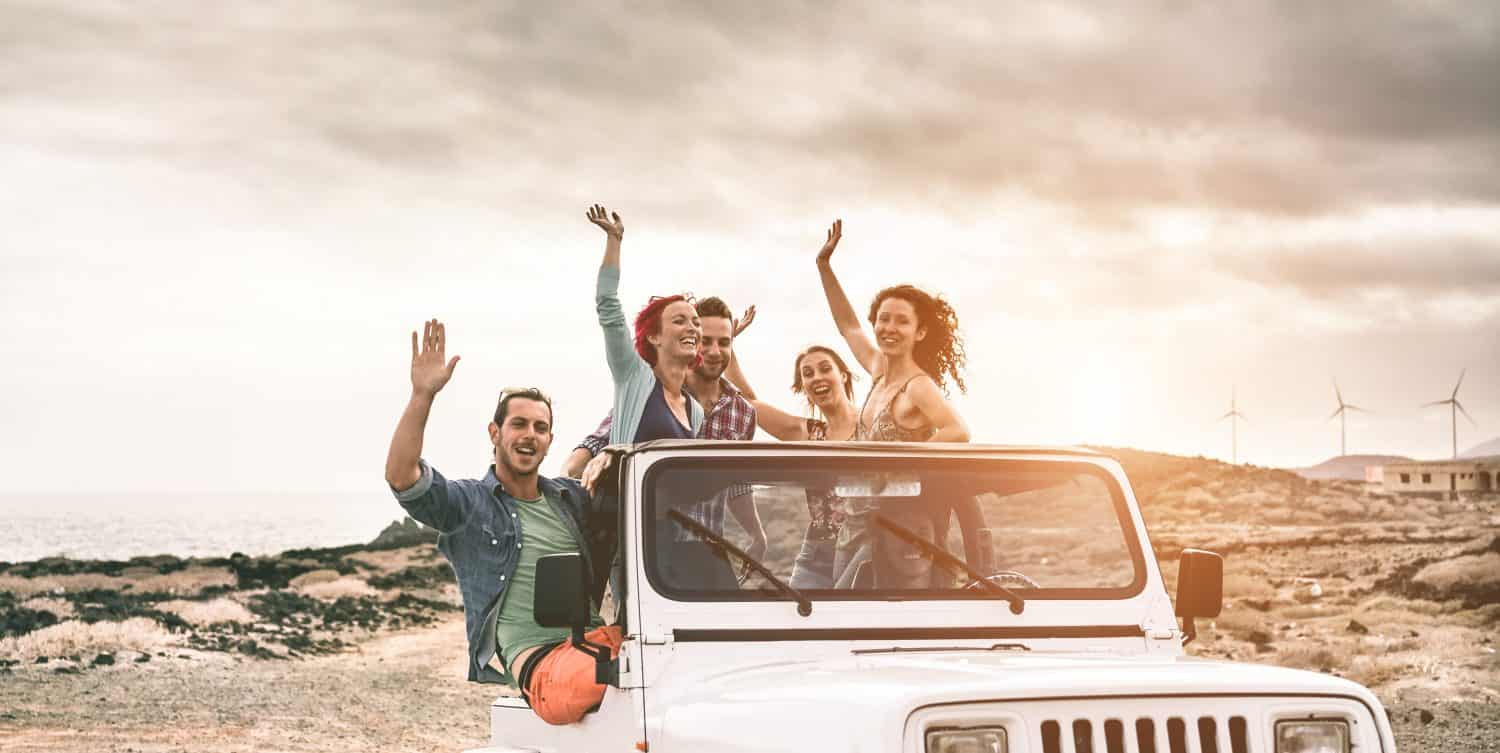
Image: DisobeyArt, Shutterstock
©DisobeyArt/Shutterstock.com
Noise pollution is another big problem in the desert, especially when large crowds flock there to experience the beautiful desert superblooms. First, noise pollution can be caused by machinery, amplified music, noisy vehicles, or even crowds of people. It is described as any “unwanted or disturbing sound” that can harm something, such as people, animals, or other organisms. This is important to consider because noise pollution greatly impacts the health and well-being of many of America’s native desert animals. Studies have found that noise pollution is even making desert bugs disappear! As evidenced by various scientific tests, noise pollution has also been found to reduce the number of eggs birds lay. This can be dangerous and detrimental to the surrounding desert ecosystem.
To minimize noise pollution when visiting desert superblooms, make sure to keep noise levels to a minimum. While preventing harm to the surrounding wildlife, this also helps ensure other visitors can enjoy the beauty of the superbloom, along with any nearby wildlife, too.
Feeding Wildlife
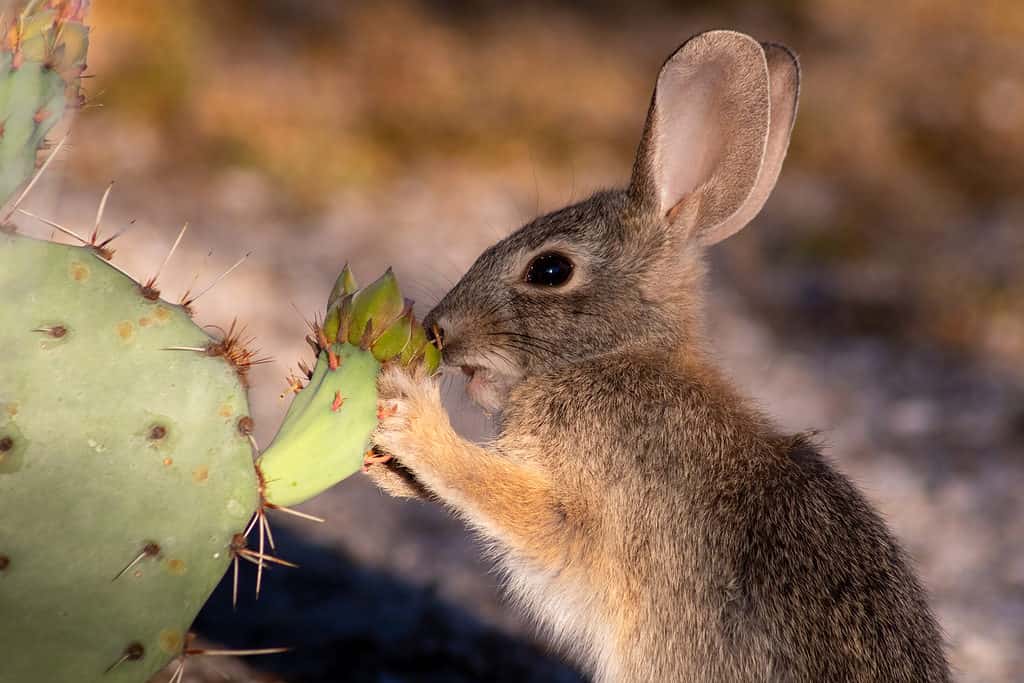
Many animals stay hydrated by eating desert cactus.
©Charles T. Peden/Shutterstock.com
Along with not disturbing native wildlife, visitors should also not (directly or indirectly) feed any of the local animals. You might think it is a harmless action or that you are even helping them, but that is simply not the case. Instead, feeding wildlife greatly disturbs their natural foraging behaviors. In extreme cases, this can lead to a reliance on human food — or human feedings — to survive. Animals that believe they can depend on humans for food often stop hunting or foraging for their meals, which is detrimental to their health and overall survival.
Other Dangers of Feeding Desert Wildlife
Besides that, human food is not particularly healthy for animals, either. Hikers often carry high-sodium, high-sugar, and high-fat foods with them — like candy or granola bars. These foods can cause serious health problems for animals since their bodies are not designed to consume these heavily processed foods. Having said that, most foods people give to wild animals are also just empty calories for them, which fill them up but do not provide any real nutritional value.
Beyond that, if animals are frequently fed, many different animal species might learn to gather around crowds looking for handouts. This can lead to highly dangerous situations for both the humans and animals involved. Wild animals can also carry diseases that are dangerous, or even fatal, to humans. Diseases include rabies, distemper, herpes viruses, salmonella, polio, tuberculosis, and likely many others that we have yet to discover.
Moreover, having too many animals in one place increases the chance of disease transmission to people, as well as the risk of spreading diseases between different species. Since food is involved, the chances of fatal fights breaking out between the animals also increase. Alternatively, feeding the wildlife can potentially make animals lose their fear of humans, which can be deadly.
To prevent a negative human impact on the local desert animals, avoid feeding wildlife at all costs. Additionally, keeping a safe distance from them will ensure they do not grow accustomed to humans. This will help ensure their safety, health, and overall well-being.
How to Protect the Environment During Desert Superblooms
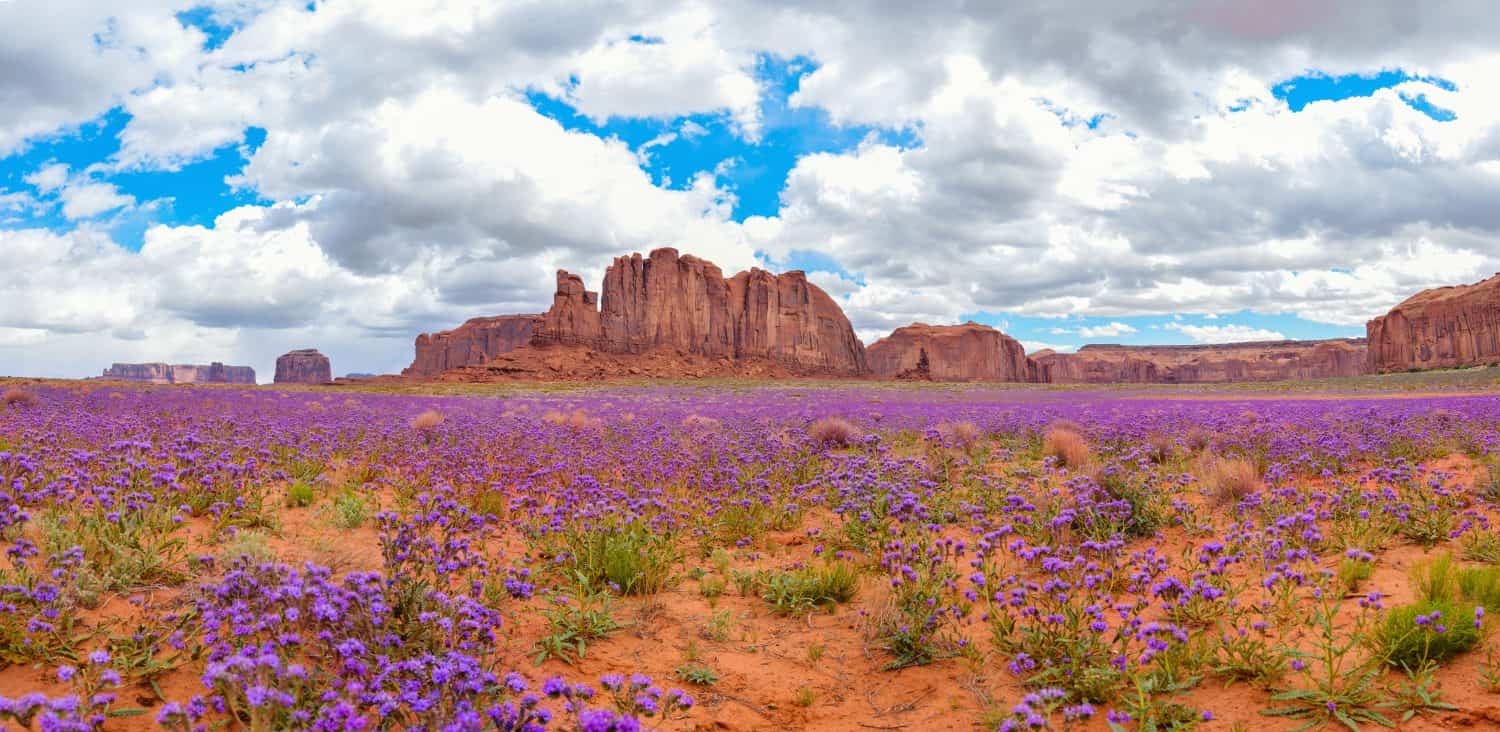
Purple wildflower blooms are a breathtaking sight to see and stand out beautifully against the landscape’s red rock backdrop.
©Felicia Morack/Shutterstock.com
The best way to prevent damage to the desert during desert superblooms is by staying educated. Being aware of your surroundings is key! Before visiting the park, it is advised to conduct some research on the best practices, policies, and recommendations for visitors coming to the area. Alternatively, you may want to consider taking a guided tour with an industry specialist. This is sure to be a once-in-a-lifetime experience where you can gain even more knowledge about the desert superblooms, as well as the surrounding environment and its native wildlife! This experience might also be helpful since they can direct you on exactly what to do and what not to do while visiting the area. Additionally, park rangers and other staff monitor visitor activities and provide guidance to ensure guests’ negative impacts are minimized.
Overall, by having thorough respect for the local ecosystem, including its diverse flora and fauna, you can enjoy the desert superblooms without destroying the desert environment. This appreciation allows for the preservation of this fragile environment for future generations to enjoy for years to come!
The photo featured at the top of this post is © lightphoto/iStock / Getty Images Plus via Getty Images
Thank you for reading! Have some feedback for us? Contact the AZ Animals editorial team.




